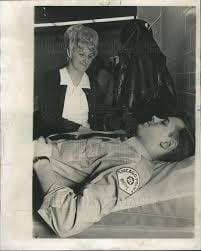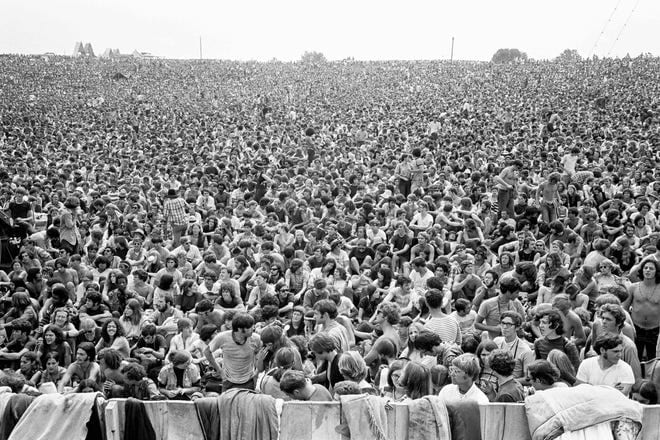 While half of the world was at Woodstock, I was planning a program for which I had no real model. So I made it up as best I could
While half of the world was at Woodstock, I was planning a program for which I had no real model. So I made it up as best I could
The Clinical Pathway
Sequence
I could see no benefit to the conventional clinical visit, laboratory testing, second visit and treatment. Instead the laboratory testing would come first. That way one saves a visit and be more substantive when taking the clinical history. Even then, kidney stones seemed to arise from a delimited set of serum and urine abnormalities we could look for in everyone who formed a stone.
Lab Protocol
The key measurement in blood was calcium because high meant probable primary hyperparathyroidism – curable. In urine, volume, calcium, phosphorus, oxalate, pH; I added uric acid because a review of stones in gout showed that many stones were calcium, not just uric acid, so maybe uric acid fostered calcium stones. I also added sodium and potassium, the former because it was thought to affect urine calcium, and the latter because low values might point to some kinds of eating disorders. Citrate and oxalate were not available right at the beginning, and fancy testing like supersaturations not thought of.
Because three replicates permit a mean with an estimate of variability I chose three 24 hour urine collections and corresponding fasting morning serum samples for each patient, by protocol.
Clinical Visit
Because the purpose was to prevent new stones, I had to count new ones. I would have to read all the x rays and count stones on both sides so I could keep track if they were increasing, or decreasing. I drew 10 pairs of kidneys on a sheet of paper and had copies made, one in each chart. I could draw in the stones and date the picture. The medical history had to include every stone passage event or surgery with dates, meaning I had to read a lot of prior medical records.
What stones were made of was so important we collected every one we could and had it analyzed.
Finally, I knew at the start my patients would come from urologists who would want a complete consultation report and also mostly want me to manage prevention for the patients they sent. So the protocol included a followup measurement of serum and 24 hour urine values, and a clinical visit, and subsequent visits yearly or more often as needed.
The six busy urologists at Michael Reese Hospital happily sent a lot of patients.
The Kidney Stone Laboratory
Almost no clinicians ran their own clinical laboratories, so I was odd. Those who hired me knew my plan but assumed the lab I was outfitting would be used for mice, or rats, or cells, or something ‘scientific’. But mine was to study my patients. They were disturbed. How would I do science? Publish? Win grants? Fame?
If asked I did not know what I would publish or discover, if anything. I believed that Yeats was right, unity of being mattered most, and was worth a risk – of my career possibly.
For the prior 4 years I had done animal research, cell research, and knew how. I also knew it demanded most of my time and could not imagine how to be a physician and run a basic science lab. Now, at the end and looking back, I still cannot imagine how to do it.
Serum Calcium
I chose atomic absorption spectroscopy and purchased a beautiful instrument made by Zeiss. No computer, it was all up to you. Light monochromated through a primary optical grating passed through a 2,000 degree K flame into which diluted serum was aspirated. A recorder measured optical density at the precise wavelength for calcium atoms. If you calibrated it well, three measurements of the same serum would match within less than 1%. The difference between mild primary hyperparathyroidism and normal was as little as 0.1 mg/dl of serum calcium out of an upper limit of 10 mg/dl, or 1%, so we could diagnose or rule out that condition with good confidence. The measurements took a lot of time.
The Rest
All the rest were run on special machines – one for sodium and potassium, another for pH, and another for uric acid and phosphate. Everything was by hand, so we needed technicians.
Treatment Protocol
In every patient I raised urine volume to a goal of over 2.5 liter/d.
High urine calcium excretion was viewed as a likely cause of calcium stones. It could be lowered by low calcium diet which I did not like as I feared bone mineral loss. Thiazide type diuretics were known to lower urine calcium, so if stones were calcium based and urine calcium was high I would give thiazide – I used trichlormethiazide because the pill looked like a blue four leaf clover.
Because of my reading about calcium stones in gout patients I decided that given such stones and high urine uric acid excretion I would use allopurinol, a drug that lowered uric acid production.
Given both high urine calcium and uric acid I used both drugs. Given neither I simply raised urine volume to above 2.5 liters/day.
Of course we all knew to treat uric acid stones by giving alkali to raise urine pH, and for cystine stones to raise urine volume above 4 liters per day and reduce protein intake.
The Computer
I had nowhere near enough money to afford a computer to hold all my data, they cost upward of a million dollars at that time for what would today look like miniature storage capacity. But I did have startup money enough to purchase storage from a large commercial computing company, and I did that – for all laboratory data, x ray stone counts, stone passage dates, stone surgery dates, medication start and stop dates, and – very importantly – dates at which I saw each patient to ascertain if new stones were present.
The Money
No one was producing 24 hour urine testing commercially, so our lab was unusual. Being done for clinical care, we were paid for testing and I demanded the revenues accrue to the stone program – perhaps my wisest decision. This gave us money to support technicians and at least one secretary to run things.
Certainly then, and I believe to the present time, laboratory revenues are crucial for so time demanding an enterprise as kidney stone prevention.
This is true because routine clinical scheduling will not easily accommodate 24 hour urine laboratory testing, especially in advance of medical appointments, so one needs a dedicated secretary. The collecting of proper 24 hour urines requires one send patients collection kits and instructions, preservatives for the urine, too. Questions come up all the time. Because the volume of the urine and timing are crucial, technician time is spent checking with patients. If the revenues go to a common lab facility these special needs cannot be met, and the quality will not be sufficient.
Scientific Ideas
One might say, the program arises from the objective of stone prevention. It was built as an engine for that purpose. This makes it a form of practical research – like a better refrigerator. But better compared to what?
At that time, we had few benchmarks. Certainly many clinics had worked with patients to reduce stones, but only one I knew about had published the outcomes of stone prevention treatments, so the field was very thin.
Looking back, the work was an open single center trial of a treatment protocol supported by its own laboratory, to see if results were promising enough to warrant formal trials. I did not think about it then, but rather as a way for me to have a career as a physician who had access to the means of clinical research – the latter to be designed as I went along.
First Patient
In about October, I saw my first stone patient in the new program. She was referred by my father in law Dr M Leopold Brodny.
About 60 years old she seemed ancient! As I took her history i mused how I knew no more about stone disease than any random physician though I would try my best for her. I also thought that after I had seen 99 more like her I would be a bit further along, and by 999 more a passing expert.
Publications
None

